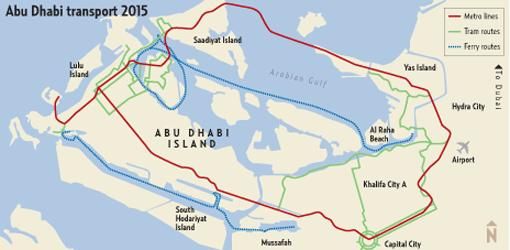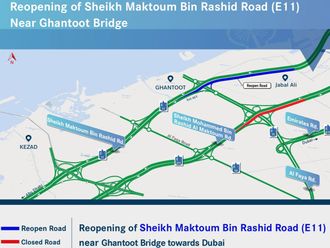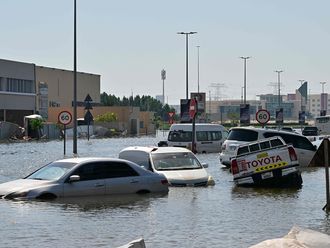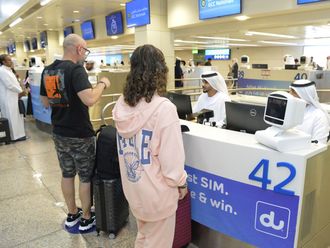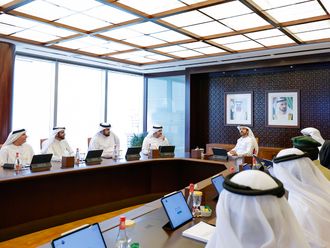Abu Dhabi: A high-capacity metro system complemented by high-speed trains, buses and trams besides ferries and taxis have been envisaged in a surface transport master plan unveiled by the Department of Transport on Wednesday.
"As growth continues, a multi-faceted, multi-modal transport system will be vital to creating a vibrant, sustainable world-class city," said Abdullah Rashid Al Otaiba, chairman of the Abu Dhabi Department of Transport.
The government, he said, is considering options for meeting future transport needs as the emirate continues to grow at a rapid rate.
"We will deliver a world-class, sustainable transport system that supports Abu Dhabi's economic, social, cultural and environmental goals," he said.
Al Otaiba added that the government would take up a regulatory role, leaving the private sector to build and manage all transport projects.
Khalid Mohammad Hashim, executive director of the Land Transport Sector at the department, said plans for high-speed regional rail and freight rail services, highways to link Abu Dhabi and the UAE to Oman and Saudi Arabia, a 130-km high-capacity metro system, a 340-km tram network, water ferries and water taxis, congestion charges and parking fees were all being given serious thought.
The metro, he said, will have frequent stops and transport 30,000 passengers per hour in each direction. The frequency of the service will be 2 minutes.
A network of tram lines with stations every 500 metres would service areas beyond the reach of the metro, Al Otaiba said, adding that a regional train service was expected to be ready between 2025 and 2030.
The Department of Transport on Thursday unveiled its surface transport master plan which is expected to transform the way residents travel throughout the emirate.
At Yas Island, which will be home to the Formula One circuit in November, a tram loop and the metro will service transport .They will cut through the island from the airport linking to Saadiyat Island and then to the Central Business District, encompassing Suwa Island, the northeastern edge of Abu Dhabi Island and parts of Reem Island.
Certain tram lines are planned to open in 2015. The department's initial drawings show the tram, which will be at street level, doing the bulk of the mass transit work. It will focus heavily on the downtown area, with stops at every block in the busiest areas. It will also bisect Suwa Island, form a loop around Reem Island, and visit more than a dozen stations along the north western edge of Saadiyat Island.
The tram service will also link Masdar City, a zero-carbon development, and new projects out in the desert, Al Reef, a development which will house 17,000 residents in villas and apartments near the airport, and up the line the communities of Hydra City and Al Falah, the latter of which is designated for Emiratis.
The industrial areas west of Abu Dhabi Island, Musaffah and the Industrial City of Abu Dhabi, as well as Hudayriyat Island will also be served.
At Capital City, a massive, circular development that will be the future seat of government and house 240,000 residents, two concentric rings of tram lines will serve commuters in what is being officially designated a "no wait transit system".
By 2020 the metro, which will be partly underground, will provide faster service between Abu Dhabi's main commercial areas. One line will run down the spine of Abu Dhabi Island, delivering commuters between Capital City and downtown Abu Dhabi.
Another line may run northeast from the Corniche area to Saadiyat Island, and on to Yas Island and eventually the airport. Metro lines will conclude inland at the planned Emirati communities of Al Falah, New Wathba and Shamkha.
A third layer of rail-based systems will be a regional train service, which may be completed between 2020 and 2030.
The network is likely to start downtown and run through Raha Beach and Capital City before the lines split off to Al Ain, Dubai and on to Saudi Arabia.
To persuade residents to leave their cars at home in favour of mass transit, Hashim said each transit stop will link with feeder services including buses, water taxis, and ferries.


